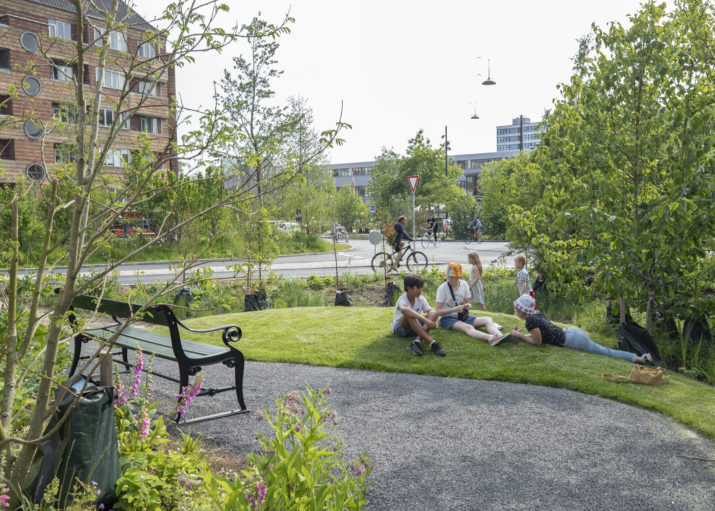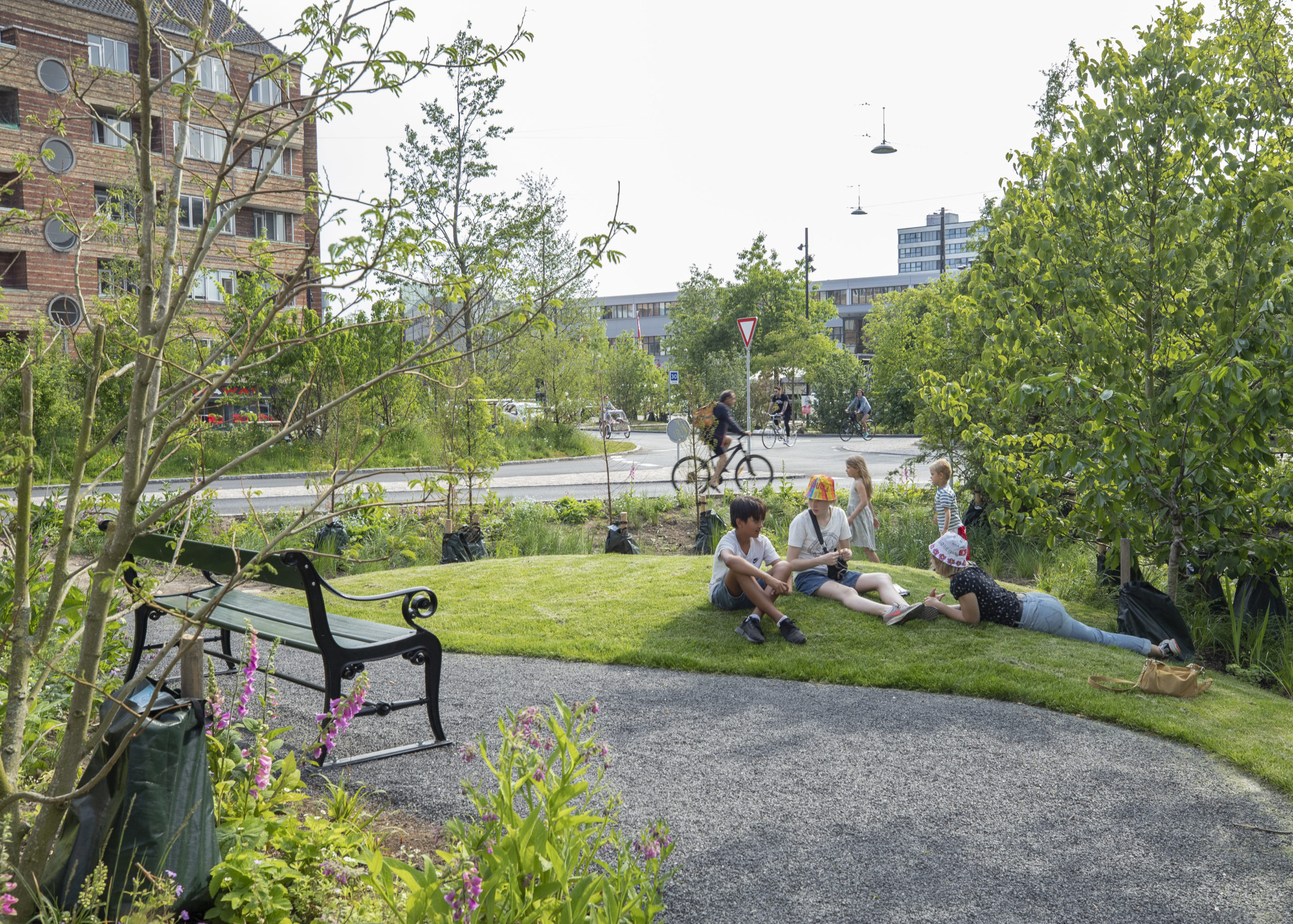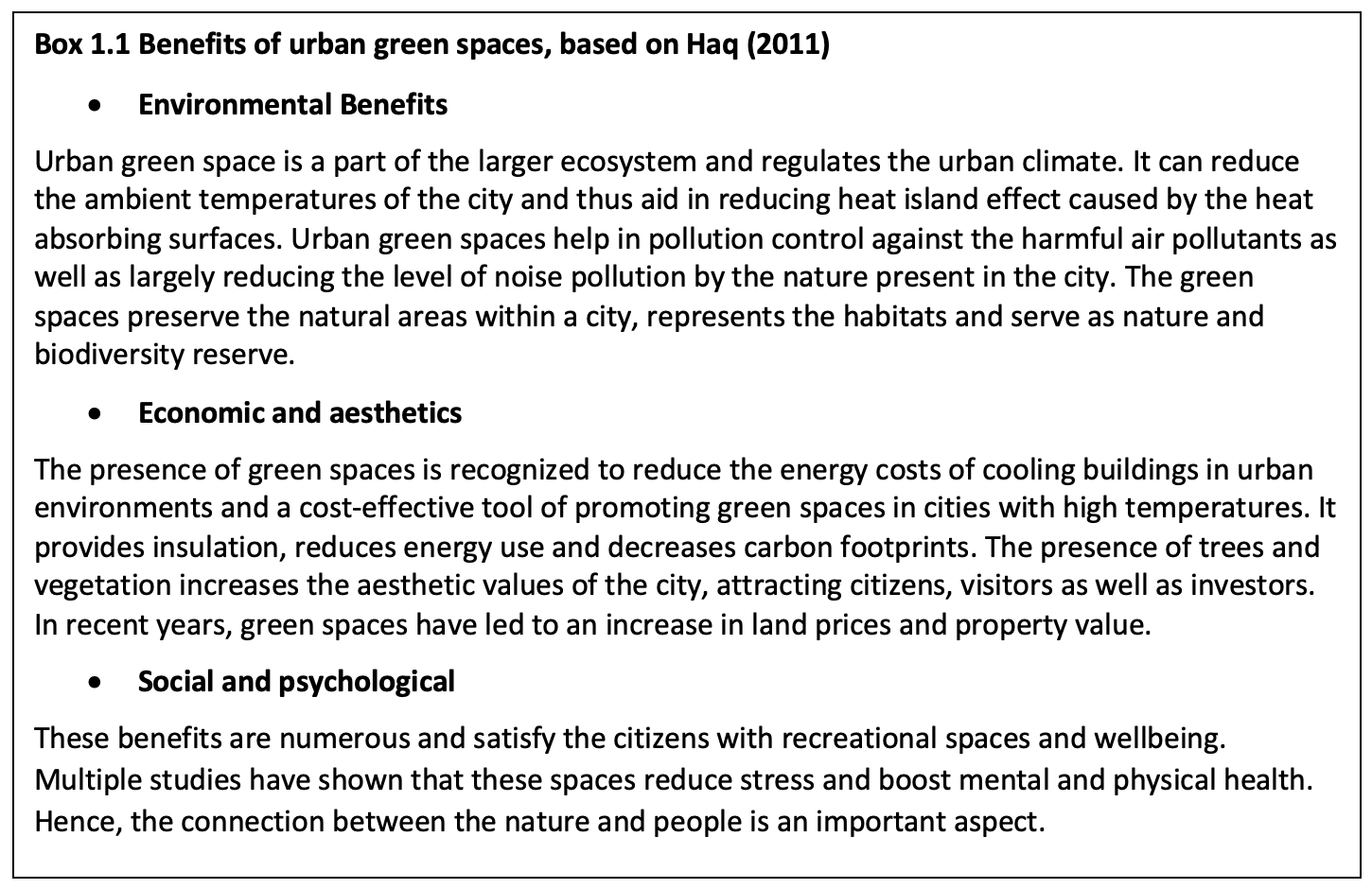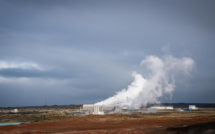

This is part of our special feature, Sustainable European Cities and Digitization.
The world’s steady population growth and migration to urban areas eat into global limited resources (Mostafavi, 2010). According to the UN, more than half of the world’s population lives in cities and, by the year 2050, it is expected that 6.5 billion people could live in cities (an additional two-thirds of the population today).
As more people move into urban areas and environmental issues become more pressing, cities will have to rethink their systems and their environmental impacts. Many cities around the world have already begun to adopt more eco-friendly practices, and some trends are starting to emerge. The sustainable cities of the future will build on these, taking today’s environmental practices a step further (Tsui 1).
The sustainable development of cities and the development of urban spaces are of great importance, not only for the natural environment, but also as an urgent need to improve the lifestyle of urban dwellers. The quality of life in cities is influenced positively by a range of significant roles that urban green spaces play. Green spaces in the city’s context contribute to a larger extent to a sustainable city and the improvement of its environment. On a global level, the UN promotes Sustainable Development Goals (SDGs), a universal call for action to end poverty, protect the planet, and to improve the lives and prospects of everyone. In 2015, all the member states adopted the SDGs and highlighted the importance of achieving the outlined SDGs with 2030 and 2050 as the target years. The importance of urban sustainability is articulated in the UN sustainability goal number 11: Sustainable cities and communities. A part of this goal stresses the “creating of green public spaces” which cannot be achieved without significantly transforming the way we build and manage our urban spaces (UN, 2015).
As cities worldwide are increasingly growing in population and built environment, the question arises: how do we become sustainable and provide more areas for green public spaces? This paper investigates the issue of sustainable European cities through the lens of politically driven aims and strategies to become green. With the cases of two capital cities, Copenhagen and London, the paper examines two municipal visions and strategies for reaching similar green city goals. This research is supported by examples of concrete “green public space”-projects in each city.
Urban green spaces
In the nineteenth century, urbanists created large landscaped parks in inner city spaces as “lungs for the city” (Spirn 60). These green pockets of land enhanced city life and dealt with improving urban environments. Today, the pace at which current urbanization processes are taking place, poses urban challenges and enforces enormous pressure on the city, its environment and resources for making it a better habitat. Cities need to “include environmental and ecological concepts and to expand traditional disciplinary and professional frameworks for describing those urban conditions” (Waldheim 10).
Urban green spaces play an important role in the sustainable development of cities. Green space interventions nourish the city’s existing character, improve environmental conditions, promote outdoor recreational spaces and active lifestyles, and protect biodiversity by creating wildlife habitats. On a larger scale, they also reduce heat island effects and reduce surface runoff. In recent years, emphasis is also given on their roles played to reduce carbon emissions and to improve the health of citizens. According to Haq (2011), benefits of urban green spaces are multiple and can be divided into three major categories: environmental benefits; economic and aesthetic benefits and social and psychological benefits (see Box 1.1 for a brief summary).
In recent years, many cities have recognized the importance of green spaces and developed goals for being green cities by the year 2050. Some of the initiatives taken include strategies to increase urban nature, protect existing parks and to promote green roofs.

Two cases of urban green spaces
Case of Copenhagen, Denmark
Urban nature is an important resource for Copenhagen and Copenhageners. The city’s parks, nature areas and trees help make our city a great place to live (City of Copenhagen 3).
In 2015, the City of Copenhagen adopted an ambitious, though not fully funded, policy: “urban nature in Copenhagen 2015-2025,” defining specific effects, goals, efforts and conditions to reach their visions concerning urban nature. The city’s vision is twofold and combines quantitative and qualitative measures to (1) create more and to (2) improve the quality of urban nature in Copenhagen.
With a somewhat human-centred focus, the city has been working tremendously on the city’s climate adaptation strategy and on addressing both the climate and biodiversity crises with the help of urban nature:
We aim to use urban nature as an active means of adapting the city to future climate conditions, enhancing biodiversity and creating optimal settings for an active urban life – to the benefit of current and future generations (City of Copenhagen 5).
As the city is expanding, it is challenged to find space for new green areas, incorporating nature into the fabric of the city every time new plans are made. The city’s ambition is to see more trees along the streets, more green courtyards, and urban nature on roof tops, facades, municipal and non-municipal lands to transform the city. (See figure 1)
In this regard, “the green planning tool” and “the tree policy” are two major political initiatives taken by the Municipality. The first is a tool that calculates a “green factor” for all publicly driven projects including construction sites and local development plans. The factor includes both quantitative and qualitative values of urban nature for each site. The second comes with a goal to plant 100,000 new trees within a decade (City of Copenhagen, n.d.).

Figure 1: Illustration of potential sites for creating more urban nature for Copenhageners (Source: City of Copenhagen 2015, p. 17. © City of Copenhagen)
In Copenhagen, the recently completed project, Bryggervangen and Sankt Kjeld’s Square (2016-2019), is an example of an urban space that creates a connection between nature-based climate adaptation and recreational meeting places for the residents (see figure 2). The project defines a special urban nature that learns from characteristic Copenhagen biotopes and uses their processes rationally and aesthetically in the city centre. According to the landscape architects behind the project:
The result is an urban nature that is aesthetic and functional, biodiverse and sustainable, green and blue, climate adaptable, and creates a sense of community. An urban nature, which gives the Copenhageners a strong aesthetic feeling of nature right on their doorstep. (SLA 2)

Figure 2: Project Bryggervangen and Sankt Kjeld’s Square (© SLA. Photographer Mikkel Eye)
Case of London, UK
Creating a greener city is good for everyone – it will improve people’s health and quality of life, support the success of businesses and attract more visitors to London. (Greater London Authority 18).
In further concretizing actions to deliver, the policy presents four strategic approaches: (1) low carbon circular economy, (2) smart digital city; (3) green infrastructure and natural capital accounting and (4) the Healthy Streets Approach, followed by seven chapters, each describing an area of concern for London’s environment through detailed aims, objectives, policies and proposals.
Recognizing that the environment has a big influence on people’s quality of life, one goal is to make new connections between the environment and the city. The strategic approach of developing the city’s green infrastructures, meaning “the network of parks, green spaces, gardens, woodlands, rivers and wetlands (as well as features such as street trees and green roofs)” (ibid 135) include objectives to: “make more than half of London’s area green by 2050” (ibid 156) by protecting and enhancing green areas in the city; “conserving and enhancing wildlife and natural habitats” (173) by protection of core network sites and biodiversity net gain; and “value London’s natural capital as an economic asset and support greater investment in green infrastructure” (ibid 190) by improving managements and new business models.

Figure 3: Illustration of potential sites for making London greener and a national park city (Source: Greater London Authority, 2018, p. 155. © Greater London Authority)
Central London is known for its dense development, which has led to an increasingly fragmented and sparse natural landscape over time. In response to this, the West Ends’ largest property owners are working together in a partnership on the project “Wild West End.” as “an exciting opportunity to demonstrate the positive impact of urban green infrastructure” (Wild West End 2017, para. 2), “with a key aim to create new green corridors to connect existing green spaces, which allow wildlife to better move between them and to provide people increased access to nature (see figure 4).
According to a survey from 2018, the project has “delivered an additional 2,500m2 of green space since 2016, equivalent to almost ten tennis courts. This includes more than sixty green roofs, fourteen green walls, ten garden squares, two pocket parks and one allotment” (IEMA, 2019, para. 9). In addition, monitoring results from the biennial bird survey have indicated the use of new green spaces by a range of urban-adapted bird species (Ibid).


Figure 4: Project Wild West End (Source: Wild West End, 2021. © Wild Wes End)
Green cities as projects of placemaking
Many cities today have already begun incorporating nature into their landscapes, serving to improve the life of their citizens. It is evident that developed cities face great challenges to find space for green infrastructure and have met this challenge through innovative, integrated and technically-advanced solutions.
By investigating the cases of Copenhagen and London, we see how both are incorporating environmental strategies that contribute significantly to the UN’s global sustainability goals. The authorities are adopting green infrastructural strategies of becoming green cities, with more and qualitatively better urban nature. Both cities have adopted similar objective strategies of promoting their green spaces and nature, but they vary in policies and implementation strategies aligned with the most pressing environmental problems of each location. In Copenhagen, the focus is set on climate adaptation, especially in terms of rainwater management, whereas London is mostly concerned with bettering its air quality.
Analysing municipal strategies, it is evident that both have citizen-oriented starting points. The municipal strategies are not only set out to solve the cities’ environmental issues, but they are also used politically in order to brand these urban environments as attractive places to live and visit. In that sense, the sustainability projects can be perceived as projects of placemaking: to improve quality of life for residents through sustainability measures. As such, the green city initiatives appear to be incorporated as the cities’ self-branding of being green and sustainable by 2050. Although the promotion and conservation of green space is partly meant to benefit the climate and biodiversity, it is clear that the prime target are (human) inhabitants, businesses and visitors. In seeking to help the survival of endangered species, for instance, the overall concern for the mayor of London is the health and wellbeing of Londoners, and for the city of London to prosper through positive branding, such as becoming the world’s first National Park City; zero carbon city, zero waste city and greenest city in the world. Similarly, urban nature in Copenhagen is described as a resource for “the good life” of Copenhageners, to benefit current and future generations.
As the policies are not fully funded, it remains to be seen whether these visions are unrealistic to achieve in terms of timeframe and economy. However, even if not entirely successful, the awareness of the issues and established initiatives serve as important first steps:
Preserving natural areas within city limits will slow habitat destruction, conserving the ecosystem as cities expand. Increasing the green space in an area will help improve air quality through respiration in plants. With more birds and insects, it will be easier for cities to maintain urban gardens, providing an eco-friendly food source. (Tsui 2).
Being somewhat well-reputed European Capitals, we believe that the strategies and projects of Copenhagen and London serve as important and inspiring examples for other cities to follow.
Urban green spaces benefit people’s quality of urban life and they effectively tackle larger city problems. Therefore, many city authorities emphasize the importance and value of green spaces while moving towards future development of sustainable green cities in 2050.
Urban green spaces can be implemented into the developed city contexts, but they require careful planning and sound knowledge on how nature and biodiversity can be integrated in a city’s limited space. The case studies in two capital cities with a dense built environment how how space can be altered and optimized.
Based on our findings, bringing green space to urban landscapes can promote and inspire better relationships with the environment while supporting important services. The approach of adopting policies of strategies and actions for implementation constitutes as an important step to fulfilling long-term identified visions.
The comparative evaluation of the cases shows an interesting contribution of the contextual, regional and geographic characteristics that promote positive development. Coastal cities inherit more of natural conditions than cities surrounded by land. In order to improve urban quality of life, it is of strategic importance to evaluate and compare existing green space policies in developed cities, which can lead to identifying the best practices for providing relevant recommendations and guidance to the planning authorities. Such studies will contribute to increasing knowledge about current methods and approaches initiated by different cities. In general, all developed cities face major challenges when it comes to availability of space, but observations of various cities in different contexts will provide a glance at how strategies are being employed into design options, given the contextual challenges. These observations can inspire and be adapted by others, working towards contributing to global goals and reaching these goals faster.
Further future research should therefore examine a wider sample of urban green spaces in developed and dense cities, in relation to the size and scale of green spaces and qualitative assessment of such urban nature. To reach the goals set forth by the UN, more research should be done on how to develop highly functional green spaces in developed urban contexts with scarce availability of space, thereby identifying and creating best practice solutions.
Ida Sofie Gøtzsche Lange is an Assistant Professor in Urban Design and Mobilities, AAU, Denmark. Her research revolves around place management and site-specific qualities, problems and potentials. She holds a particular interest in the particularities of port cities, in particular how they tend to struggle with local identity, environmental issues and placemaking.
Chrisann Neysa Rodrigues is a final year Master’s degree Student in Urban Design at AAU, Denmark. Her academic interests include working with the built environment and its effects on people’s lives, creating environments which are sustainable and socially responsive.
References
Greater London Authority, 2018. London Environment strategy. [PDF] London: Greater London Authority. Available at: https://www.london.gov.uk/sites/default/files/london_environment_strategy_0.pdf [Accessed 31 March 2021].
Haq, S. M. A., 2011. Urban Green Spaces and an Integrative Approach to Sustainable Environment. Journal of Environmental Protection, Issue 2, pp. 601-608.
IEMA, 2019. Wild West End. [Online] Available at: https://transform.iema.net/article/wild-west-end [Accessed 7 April 2021]
City of Copenhagen, 2015. Urban Nature in Copenhagen – Strategy 2015-2025. [PDF] Copenhagen: City of Copenhagen – The Technical and Environmental Administration. Available at: https://kk.sites.itera.dk/apps/kk_pub2/pdf/1653_EyzOS8ePZx.pdf [Accessed 31 March 2021].
City of Copenhagen, n.d. Urban Nature. [Online] Available at: https://urbandevelopmentcph.kk.dk/artikel/urban-nature[Accessed 31 March 2021].
Mostafavi, M., 2010. Why Ecological Urbanism? Why Now?. Harvard Design Magazine, 1(32) [online] Available at: http://www.harvarddesignmagazine.org/issues/32/why-ecological-urbanism-why-now [Accessed 4 April 2021].
SLA, 2021. Bryggervangen and Sankt Kjeld’s Square. [Online] Available at: https://www.sla.dk/en/projects/bryggervangen-sankt-kjelds-plads [Accessed 31 March 2021].
Spirn, A. W., 1984. The Granite Garden: Urban Nature and Human Design. New York: Basic Books.
Waldheim, C., 2011. On Landscape, Ecology, and Other Modifiers to Urbanism. Scenario Journal, [online] Available at: https://scenariojournal.com/article/on-landscape-ecology-and-other-modifiers/ [Accessed 4 April 2021].
Wild West End, 2021. Vision: Wild West End. [Online] Available at: http://www.wildwestend.london/vision [Accessed 31 March 2021].
Tsui, J. 2020. What Will the Future of Sustainable Cities Look Like. Environmental Protection, [online] Available at: https://eponline.com/articles/2020/08/12/what-will-the-future-of-sustainable-cities-look-like.aspx [Accessed: 31 March 2021].
UN (2015) Sustainable Development Goals. [Online] Available at: https://www.undp.org/content/undp/en/home/sustainable-development-goals.html [Accessed 31 March 2021].
Published on May 11, 2021.




